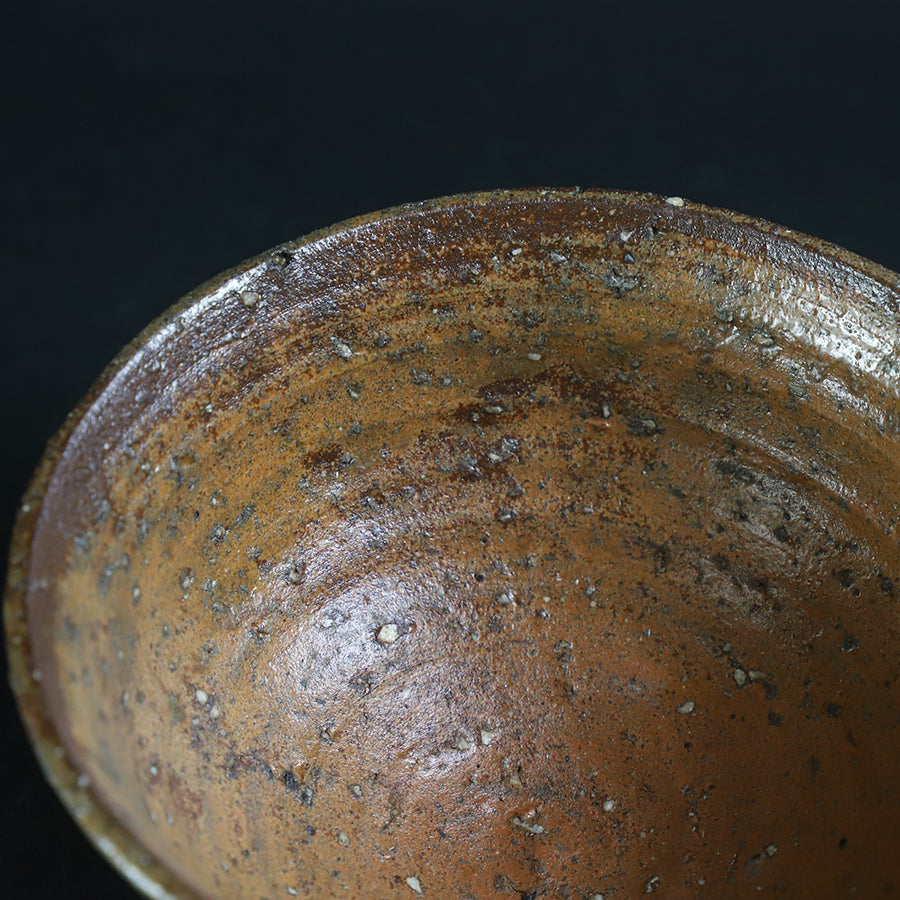Shintaro UchimuraShintaro Uchimura
-
ギャラリー一番館
からのご紹介 - 陶歴・プロフィール
-
Uchimura Shintaro is a ceramic artist who describes his ceramics as historical sketches, and his works focus on replicas of Joseon dynasty and Old Karatsu wares, which he has studied extensively.
Meeting with masters of ceramics
In 2010, an exhibition called "HAKATTANA Hyōgemono Kyushu Raid" was held as a collaboration with the manga "Hyōgemono", which has the military commander and tea master Furuta Oribe as its main character. "Hyōgemono" is pronounced "hyōgemono" and means to be playful. In an era when it was technically difficult to make neat and tidy pieces, the aesthetic sense of the time meant that the pieces were rather misshapen and had a sense of wabi-sabi here and there.
The group exhibition included more than a dozen distinguished ceramic artists from Kyushu, including Masahiro Takehana, Naoto Yano, Ryohei Yamamoto, Yorimada Yasunaga, and Kentaro Murayama. Among them was Shintaro Uchimura.
Ichibankan owner Sakamoto first encountered his artist's work at this exhibition and was captivated by its charm.Historical Copy
He actively creates pottery that copies Joseon dynasty and Karatsu ware. He has Gohon tea bowls that were fired in Korea based on models made in Japan, and vessels that originated when Gen'etsu Funabashi Gen'etsu copied Gohon tea bowls in Korea, and it is clear that he is creating types of objects that are not usually made while studying history. He is a very rare artist in the sense that he creates both Karatsu ware and Kokaratsu, and Goryeo tea bowls, and is a versatile artist who skillfully creates a wide variety of tea bowls and sake cups.
Passion and skill in pottery
Kakinotake tea bowls lined up at the "Shintaro Uchimura New Works Exhibition" in 2024. To reproduce a copy of a work, everything must match: color, painting, glaze, firing temperature, etc. In particular, to faithfully reproduce the shape of a kakinotake pot fired in Korea 400 years ago, highly advanced techniques are required. The same goes for the texture of the clay, and many different firing tests have been conducted repeatedly, and much research has been done to reproduce the atmosphere of the original kakinotake pot.
He became a potter after attending a pottery class, and originally graduated from a technical college and worked as a bridge designer. He developed an interest in pottery at the class, and while studying pottery himself and the classics of the Karatsu and Yi dynasties, he honed his skills on his own without any tutoring. His techniques and quality, which faithfully reproduce traditional Korean pottery while also displaying his own creativity, are highly regarded.


-
【profile】
Born: 1975
Pottery Maker: Sankyogama
[Ceramics history]
1975 Born in Kurino-cho (now Yusui-cho) at the foot of Mount Kirishima in Kagoshima Prefecture
1995 After graduating from Kagoshima National College of Technology, he began working in bridge design, but was drawn to antique pottery and decided to pursue a career in pottery.
2002 Became independent as Karatsu ware studio Raizanbo
2008 Moved the workshop and opened Sankyogama kiln















